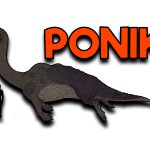If you’ve ever had a reason to fear jumping into the natural waters of Maine, the likely existence of mysterious cryptids is probably why. Ocean or Lake, stories of water dwelling beasts of all kinds have been tales told for centuries, and generations, so naturally – we’re diving into the research to tell you what you need to know to stay safe on dry land or – if you’re anything like we are – down for some underwater adventure!
The Pocomoonshine Lake Monster goes by a few different names, including the Chain Lakes Snake, Poco, and the Chain Lakes Monster. It’s said to be 30-60 feet long, and when it travels on land, leaves a trail on the ground 3 to 4 feet wide, like an eel or a snake would. The bulk of the body is rarely seen out of the water, but witnesses claim it is best compared to a large snake.
Although it was first recorded as being witnessed in the 1880’s the Passamaquoddy Legend it’s most closely associated with has been around much longer. As a matter of fact, the Passamaquoddy had left drawings of water serpents, carved into shale, as far back as 3,000 years ago, and they long have held in high regard a legend involving famed Penobscot shaman, Old John Neptune, called “The Fight with Wiwiliamecq”.
The Legendary account puts the great Penobscot shaman, John Neptune, in direct battle with a Micmac chief at a lake the Passamaquoddy call “Neseik” – which means “muddy from the great fight”. During the altercation Neptune turned himself into a giant horned snail, known by the Passamaquoddy as “wiwiliamecq”, and the Micmac turned himself into a supersized snake, 40 feet long. The battle ensued in the lake, and John Neptune emerged the victor, after which he tied the body of his defeated adversary to a tree beside the lake for all to witness.
There have been numerous documented accounts of locals seeing tracks, trails, and remnants of the Pocomoonshine Lake Monster as it slithered from one nearby lake to the next, and even a couple of potential sightings, but all date back to the late 1800’s and our research has uncovered no sightings more recent or relevant to today’s time.
Things we think you should know about “Poco”, the Chain Lakes Monster
By all accounts and reports, Poco is not aggressive and will not approach people.
Unlike other sea or lake monsters, Poco is not restricted to water. It is known to travel from lake to lake within the Chain Lakes region, by way of land.
Its body may be most easily described as “snake like” but when it moves on land it moves more like an inchworm than a snake.
Poco’s skin is also somewhat snakelike, a darkish Olive green in color, but it has no scales, and it glistens with a sort of oily rainbow tint when the sun hits it just right.Tracks left by Poco have offered evidence suggesting it has flippers for feet. These flippers help Poco inch along on land and ice, but also give it high maneuverability in the water.
Our Theories about Poco
Poco could be a tall tale told by back woods residents hoping to scare away people looking to move their families or businesses into the area. It’s happened plenty of times in the past, with other “legends”, and since Poco seems to have disappeared altogether after its initial, and very brief, appearance in Washington County’s oral history, we suppose this theory is a quite plausible one.
Poco could have been a real, living, breathing, biologic organism of some sort, which people did witness and which did leave tracks of its presence. And, it could have died – which would explain why there have been no witness accounts more recent than the late 1800’s. Based on its description by witnesses, and by the tracks its been said to have left behind, Poco could be a plesiosaur like Nessie (the Loch Ness Monster) or Champ (of Lake Champlain here in the US) – are thought to be. What’s more interesting about this theory is that it was explained, back in the 1800’s, as resembling modern day Nessie & Champ descriptions by people who were, by all reasonable accounts, very likely unaware of the existence of Nessie or Champ. Poco could have disappeared from our historic memory but still be alive today, remaining solitary & elusive, just as Nessie and Champ are thought to be, today. The fact that Poco calls a sparsely populated area of Maine “home” makes this theory even more plausible. If there are not many possibilities for witnesses to see Poco it stands to reason there will be less opportunity for Poco to be seen. Poco is known by the locals to be a gentle giant; a toothless and harmless legend of Maine’s Washington County; which has guarded the waters of the Chain Lakes region for centuries, and has never brought harm to any person or animal in its documented history. If you should encounter “Poco”, The Chain Lakes Monster, we hope you can come away with some photographic evidence or, better yet, some video. And if you do, we’d love to hear from you!
